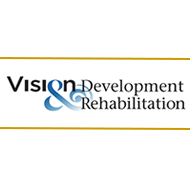Background:
Reading is a complex task and for students who are not proficient in reading, intervention and remediation is frequently necessitated. Previous literature has shown support for the inclusion of in-school oculomotor training using the King-Devick Reading Acceleration Program (K-D RAP) to supplement current reading curriculums. The aim of this study was to evaluate the effect of the K-D RAP intervention in students with dyslexia.
Methods:
Participants with dyslexia diagnosed by a licensed professional were recruited and enrolled (n=7). Participants performed a total of six hours of K-D RAP intervention which was parent-supervised in their homes. Reading fluency and the King-Devick Eye Movement Test for Reading was administered before and after the intervention.
Results:
Participants demonstrated a 14 WCPM increase in fluency following intervention with K-D RAP, which was significant (50 to 64 WCPM; p = 0.0178). Greater reading fluency improvements were observed in younger participants compared to older participants (under age 10: 51.2% vs. ages 10 and above: 3.2% improvement; p = 0.0339). Participants with other learning disability diagnoses in addition to dyslexia were likely to impact progress in reading achievements.
Conclusion:
Similar to prior research of randomized, controlled trials examining the effect of K-D RAP in the general school curriculum, students with dyslexia in this study achieved significant reading gains following six hours of practice. There is an urgency for implementing K-D RAP, as findings indicate that older students do not improve to the same degree as younger students, which is coincident with research demonstrating earlier intervention is more effective for reading enhancement.
Summary Points:
- Dyslexia is frequently associated with oculomotor, or eye movement, dysfunction.
- Children with dyslexia achieved significant reading fluency improvement after improving oculomotor skills with K-D RAP.
- Students with reading ability 4th grade and lower improve to greater degrees than students with reading ability over 4th grade, therefore, early implementation of K-D RAP is an important consideration.

